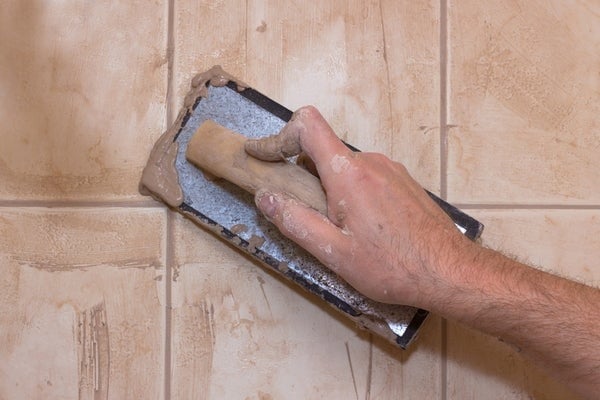How to Tile, Grout, and Caulk a Shower Yourself

Here’s how to DIY a shower installation or renovation and learn how to tile, grout, and caulk a shower yourself.


Here’s how to DIY a shower installation or renovation and learn how to tile, grout, and caulk a shower yourself.
If you’re an experienced do-it-yourself weekend warrior and you enjoy a good DIY challenge, it’s entirely possible for you to tile, grout, and caulk a shower yourself. This could save you a lot of money and hassle, but know that this is a project that requires some experience with tiles and tools in order to get the best results. When in doubt, it’s wise to call in the experts. But, if you're ready to forge ahead, here’s what you need to know to tile, grout, and seal a shower yourself.
The secret to any successful tile installation is planning, planning, and more planning! The first step of any tiling project is to choose your tiles before you plan the rest of the installation. Once you’ve chosen your tile, decide on the layout of your tiles. It’s a good idea to measure all the areas (at least twice!) and make a diagram of the tiles on each wall. You’ll also want to plan out any border tiles or other decorative tile placement.

See how a plumbing protection plan can help with covered repairs.

Step 2: How to Grout Shower Tiles 
Grouting is relatively more straightforward than installing tile, so you’ve completed the hardest part of the project. In the following video, Mark Donovan of HomeAdditionPlus shows us the best grout application techniques to use when applying caulk to shower tiles.
Additionally, here are a few grout application tips and tricks:
Step 3: How to Caulk to a Shower 
This step is even easier than grouting, so you’re in the home stretch! Replacing the caulk around your tub, tiles, shower door, and drain is a relatively simple do-it-yourself fix that takes only a few hours from start to finish. Here’s how:
And you’re now done with this project and you’ll be able to enjoy your new tile shower for years to come. Nice work! For the repairs you don't want to DIY, consider an American Home Shield home warranty. Our home warranty plans protect parts of up to 23 systems and appliances you rely on everyday, so when an unexpected breakdown occurs, we'll assign a Pro and get you back up and running again.
AHS assumes no responsibility, and specifically disclaims all liability, for your use of any and all information contained herein.
Have a plan for your home when things don't go according to plan
Shop Home WarrantiesDevelopment